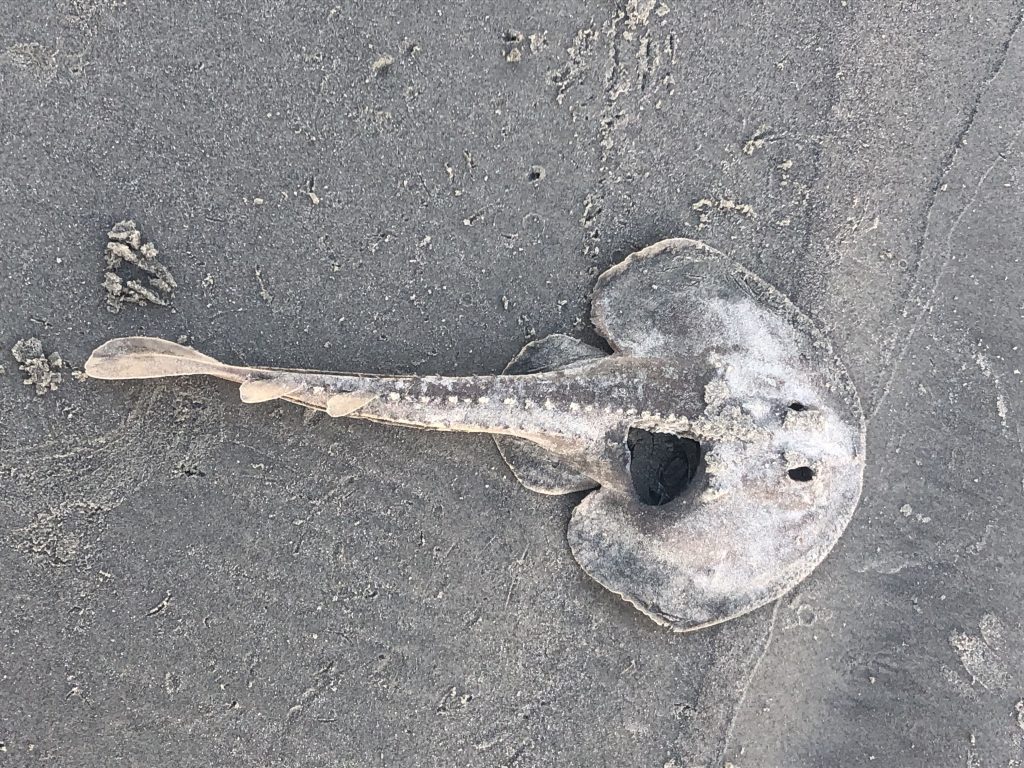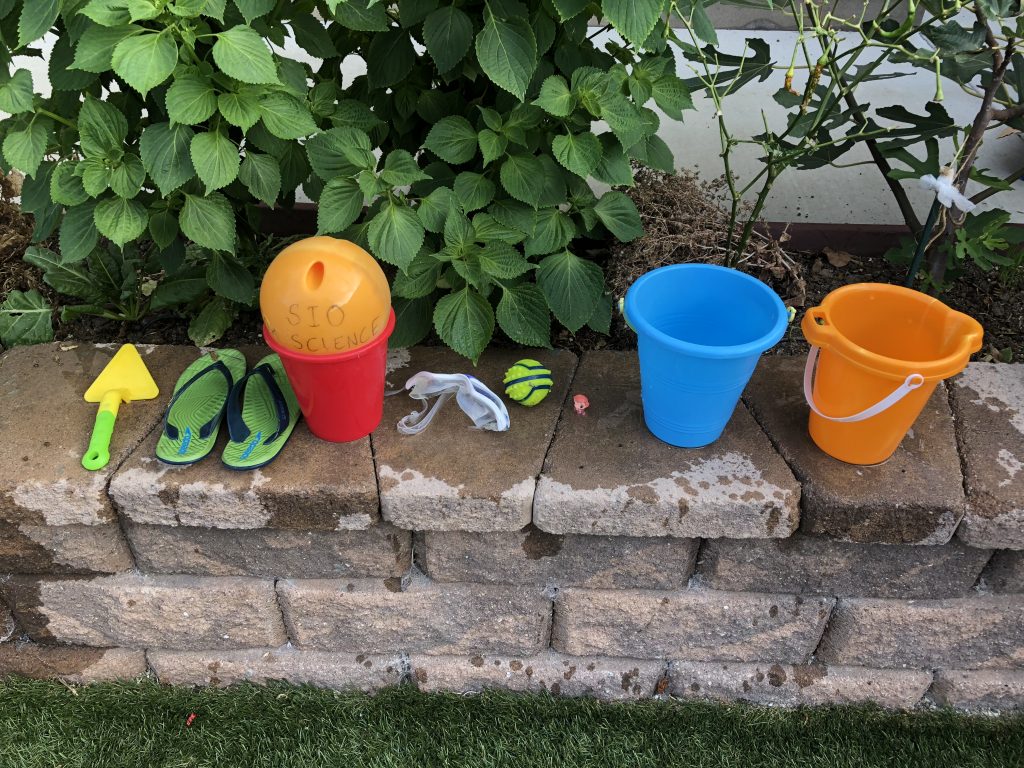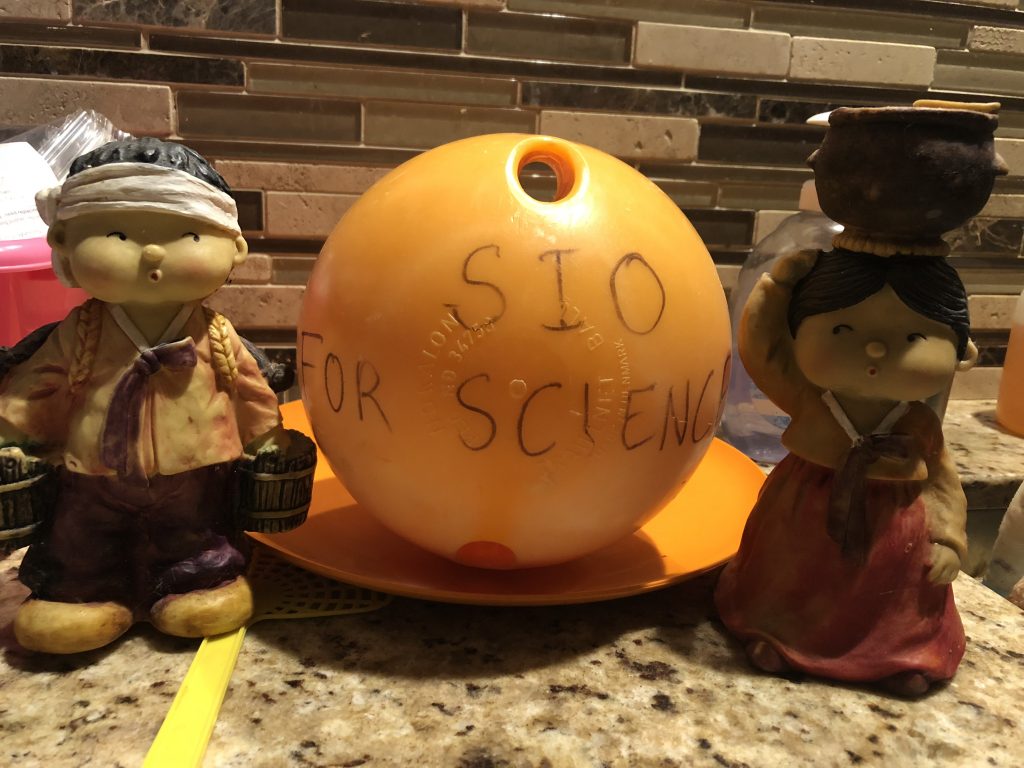Thornback Guitarfish: How my hyperbole garnered attention from the Scripps Institution of Oceanography!
November 14, 2019
by drplasticpicker
It is 5am, and my body is awake and time for a bit of coffee and blogging. When the earth awakens and the sun begins to rise, I will head off on my morning walk. But before then I wanted to share with you how drplasticpicker gained attention from the Scripps Institution of Oceanography!
Drplasticpicker is a published scientific writer. I think actually most physicians at some point were authors to get into medical school and then advance in the next stage of our careers. My first “publication” was the summer after 9th grade, when I took Marine Biology as a fun summer elective at the then Chula Vista Nature Center – now renamed the Living Coast Disovery Center. That’s a whole other post about how Chula Vista gets short changed and does not get the respect it deserves. It was in the monthly newsletter the “Baywatch News.” I believe it was an article about fiddler crabs. I was very proud of that article, and it was on my high school resume. I’m not sure if it helped me get into college. But I actually loved writing that article and it included a sketch I had made of fiddler crabs.
My next foray into scientific writing was more painful. I truly wrote every word of one review article on Growth Hormone with a pediatric endocrine attending when I was a fellow. Simultaneously I was having pregnancy complications and on bedrest, but that article got published and has been cited 17 times. It was one of the most painful academic endeavors that I have ever had to go through, and for a measly 17 citations. Wordsmithing sentences with this particular attending was again, intellectually painful. She was a very nice woman though. It was probably more me than her. But I could have spent time with my then toddler teaching him to to talk. At that point he was a bit language delayed as his father and I were trying to navigate the academic medicine route, and his grandparents were helping us at home the best that they could. I have since had more meaningful scientific writing experiences with several articles on bone density and the hormone adiponectin. The adiponectin article was cited 36 times in the last 10 years! I expect the figure will slowly increase as who else will spend a year of research fellowship on adiponectin and women with major depressive disorder? The irony is I am a pediatrician. I wrote an obscure article about adult women’s bone density.
So now you can understand drplasticpicker’s excitement when a fun blog post that I wrote “A Beached Stingray!” https://drplasticpicker.com/beached-stingray/ gained the attention of the Scripps Institution of Oceanography! After the exclamatory title, it continued ” I saw this odd form laying lifeless on the beach.” And then I posted the following picture.

I continued “Indeed, it does look like a stingray. You can see that it’s stinger is gone. There is a rectangular portion of it’s mid thorax missing. A scavenger perhaps? I did gently push it with my tennis shoe to see if it was alive.”
I continued, “Dear readers, I think this is the first indication to drplasticpicker of the warming coastal waters in the Pacific Ocean. Stingrays can swim in shallow waters but it is November in the Pacific. The water is not supposed to be this warm!” And I delcared in my post, “I may need to let the Scripps Institution of Oceanography know about this finding. I will let them know that drplasticpicker is a citizen scientist . . . and through the power of social media connectedness will continue to report any usual happenings on this half mile stretch of beach!” And it was with this hyperbole and the magic of Facebook, that the Scripps Institution of Oceanography replied.
And indeed they did and with consultation with the Ray expert at SIO. Imagine dear readers, this is a REAL scientific writer who has probably published many many many articles about marine biology and probably each of those articles has hundreds of citations. I was so excited that they spoke to the Ray expert. Actually, I did not know they even existed. They are probably like unicorns, hidden somewhere in the denizens of the Scripps Institution of Oceanography – rare and wondrous people who we are only allowed to imagine. But they are real, as unicors are real.
Scripps replied with a direct quotation from the Ray expert, “It’s a local ray species called at Thornback, Platyrhinoidis triseriata. The are pretty common near shore and are named for the impressive spines on their dorsum. They are in their own ray family and don’t have a ‘stinger.’ No idea what happened to it, but probably scavenging. See the eyes are missing too, a lot of scavengers go for the eyes and internal organs first.”
So there you have it dear readers. Thornback, Platyrhinoidis triseriata. Can you say that 10 times? I think I’ll say Thornback Guitarfish. Thank you Ray expert for looking at my blog post (which I’m super grateful for!) and replying. I told my daughter that scavengers had pecked out the eyes and eaten the internal organs first, and she was horrified and I think will have nightmares tonight. But that is the circle of life, and it’s a harsh world out there especially for Platyrhinoidis triseriata. These interactions keeps drplasticpicker going and I will continue to transverse my little stretch, cleaning up the ocean plastic debris.
Scripps Institution of Oceanography, thank you for your reply. This has made this avatar of a pediatrician so happy. I will tell all my patients who aspire to be marine biologists about the local Ray expert who was so kind.
The good Jedis at SIO should know, that drplasticpicker will continue to be a force of good as a silent helper for the earth, picking up bright pieces of plastic so our endangered coastal birds don’t eat them. Also I am the finder of lost things on the beach. Look closely dear readers at the photograph of the salvagables I found on September 7. 2019. The orange ball. This is accounted for as a “ball” under my totals https://drplasticpicker.com/plastic-picking-round-up/.


I believe it’s a trawl line ball that belongs to them! If anyone from Scripps Institution of Oceanography is reading this blog post, just let me know if you want me to return it. I just found it on the beach and thought it was something someone forgot! I did not see the SIO until I got home. Please don’t call the police! I found a wallet on the beach and returned it , so I am not a thief https://drplasticpicker.com/drplasticpicker-finds-a-lost-wallet-and-had-an-adventure/. LOL. I am happy to drop it off after clinic.
Update: SIO replied. They were so helpful and corrected some of my spelling errors on my post (true thanks!). They also replied, ” I will ask around and see if I can find who the float belongs to. Thank you for your interest in donating to Scripps. ” In December 2019 donations, I will discuss with the children our donation to Scripps.
If you dear reader would like to consider donating to Scripps Institution of Oceanography, please visit the following page for giving opportunities: https://scripps.ucsd.edu/giving/give-now or contact the Scripps Development Office to connect with a staff member. Email: supportscripps@ucsd.edu
Tel. (858) 822-1865.
1 thought on “Thornback Guitarfish: How my hyperbole garnered attention from the Scripps Institution of Oceanography!”
-
Pingback: Pediatric Advice: Eat your vegetables to get your Fiber – Dr. Plastic Picker
